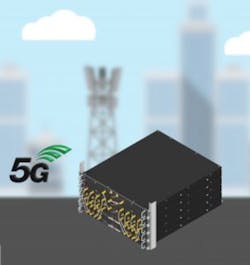Swindon, UK. AceAxis has announced the launch of a millimeter-wave test system, initially targeted at 28 GHz, for characterizing the RF performance of prototype high-frequency components and systems for 5G.
Building upon AceAxis’s expertise in the design and supply of remote radio units (RRU) for 4G mobile networks, the Millimetre-Wave 5G Test System extends the capability of the existing AceAxis 4G modular test system. The new modules offer a compact, flexible solution for the emulation and aggregation of very wideband 5G radio channels at millimeter-wave frequencies. The modular design means that it is fully configurable to meet current and future standards and frequency bands.“Our Millimetre-Wave 5G Test System is extremely versatile,” said Steve Cooper, CEO of AceAxis. “It can be used by operators and OEMs for laboratory RF testing of base-station sectors, and also for the evaluation of prototype mobile terminals and baseband chipsets, since it can emulate 5G radio performance in either uplink or downlink functions.”
The compact, rack-based Millimetre-Wave 5G Test System comprises five individual 1U modules and is expandable to scale for additional capacity and frequency bands. The units supplied as standard include two AceAxis Ultra-400+ radio modules; a +10-dBm 400-MHz to 6-GHz wideband output module; a 2 x 8:1 combiner module; and a 28-GHz Millimetric Converter Module with an output bandwidth of over 1 GHz. The wide bandwidths of both the radio modules and the mmWave Converter mean that up to eight 100-MHz carriers can readily be aggregated into a single 800-MHz carrier.
Initially being launched with an operating frequency in the 28-GHz band, modules can also be supplied for the planned 39-GHz and 60-GHz bands, and also for any other potential 5G mmWave bands, including 78 GHz, when required.
About the Author

Rick Nelson
Contributing Editor
Rick is currently Contributing Technical Editor. He was Executive Editor for EE in 2011-2018. Previously he served on several publications, including EDN and Vision Systems Design, and has received awards for signed editorials from the American Society of Business Publication Editors. He began as a design engineer at General Electric and Litton Industries and earned a BSEE degree from Penn State.

